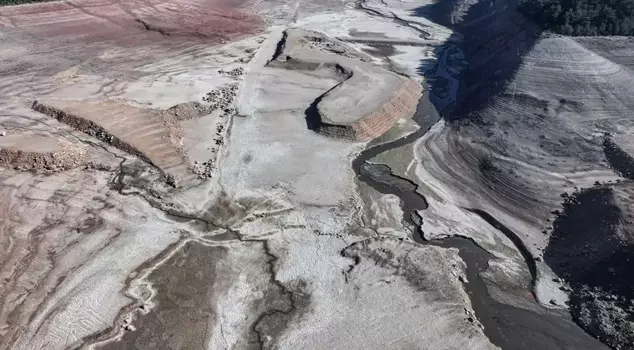
06.10.2025 18:08
Due to drought in Bursa, the water level in the reservoirs has dropped below 1%, reaching 0.54%. Two reservoirs that supply water to some districts in the city have almost completely dried up. BUSKİ has started implementing rotational water cuts in central neighborhoods, while hospitals and universities have been exempted from these cuts.
Due to the increasing drought in Bursa, the water levels in the city's reservoirs have dropped to a critical level. While the average water level in the reservoirs that supply the city's drinking water needs has decreased to 0.54%, planned rotational water cuts have begun to be implemented in some districts.
UNDER THE INFLUENCE OF EXTREME DROUGHT
According to the last 6 months of data from the General Directorate of Meteorology, Bursa is among the regions experiencing "extreme drought." With insufficient rainfall, two reservoirs that supply water to the districts of Yıldırım, Nilüfer, Osmangazi, Gürsu, and Kestel, as well as some areas of Mudanya, have reached the point of complete drying.
ROTATIONAL WATER CUTS HAVE BEGUN
In order to mitigate the effects of drought, planned rotational water cuts are being implemented in neighborhoods connected to the central districts. In a statement made by the Bursa Water and Sewerage Administration (BUSKİ), it was noted that the water cuts would not affect critical institutions such as Uludağ University, City Hospital, and State Hospitals.
NEED IS INCREASING EVERY DAY
Associate Professor Dr. Efsun Dindar, a faculty member of the Environmental Engineering Department at Uludağ University, stated that due to the effects of the climate crisis, high evaporation rates, and the increase in agricultural, industrial, and residential populations, the need for water is increasing rapidly, and the water in the reservoirs is depleting quickly.
"10 YEARS AGO AT THIS TIME..."
Expressing that troubled periods have begun in the reservoirs due to the lack of timely rainfall, Dindar said, "Currently, the water levels in Bursa's reservoirs, Doğancı and Nilüfer, are averaging 3.84%, and we have 12 days of water left if no rain falls. The water levels in these reservoirs were around 60% at this time of year 10 years ago. Our water levels in the reservoirs rise in April and May with snow and rain. Even if the summer season has been dry, we did not face a significant water shortage. Looking at the latest data, we see that the water in our reservoirs has steadily decreased over the last 10 years. The figures we are discussing today have dropped below 4% from 60%."